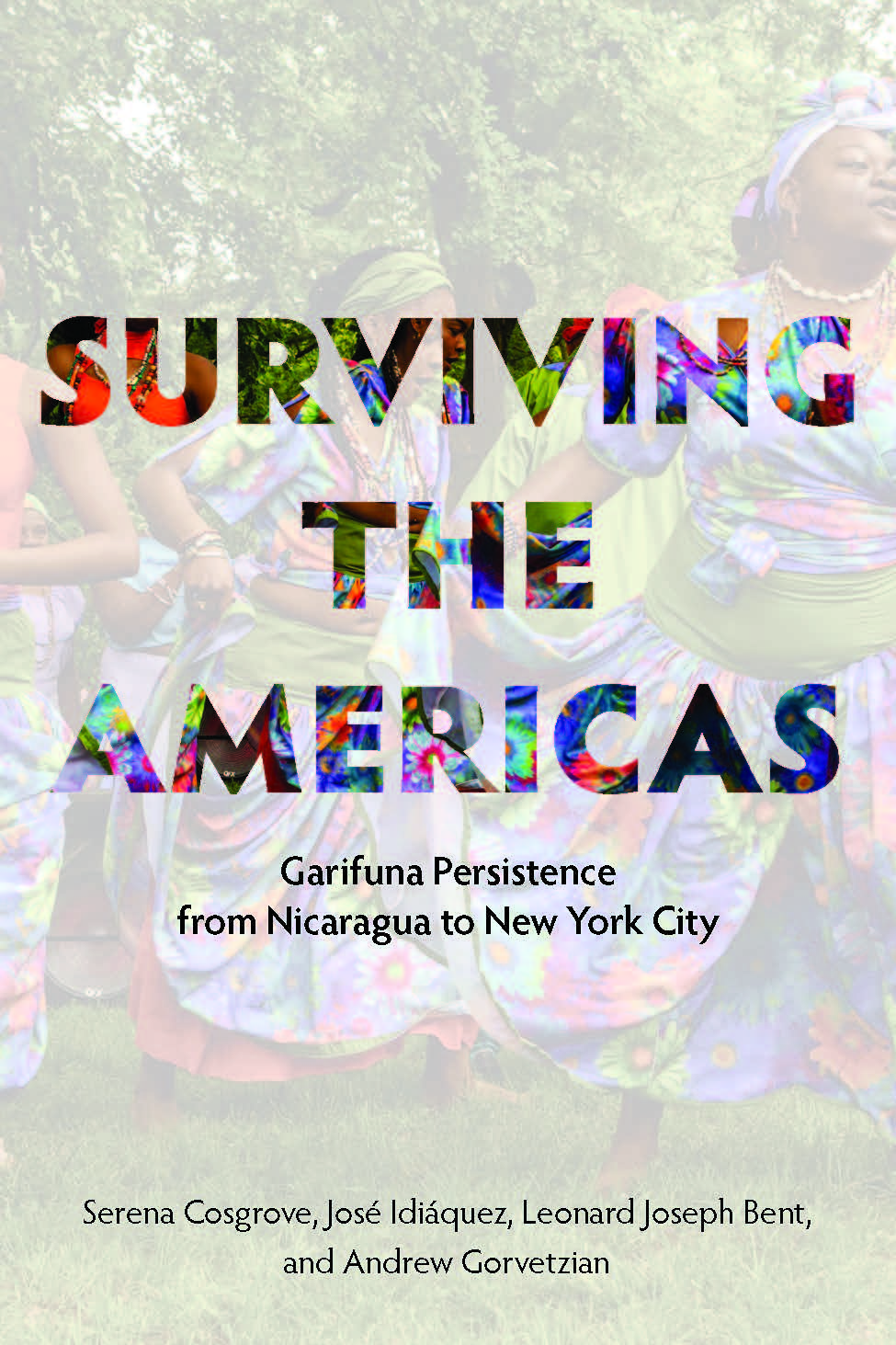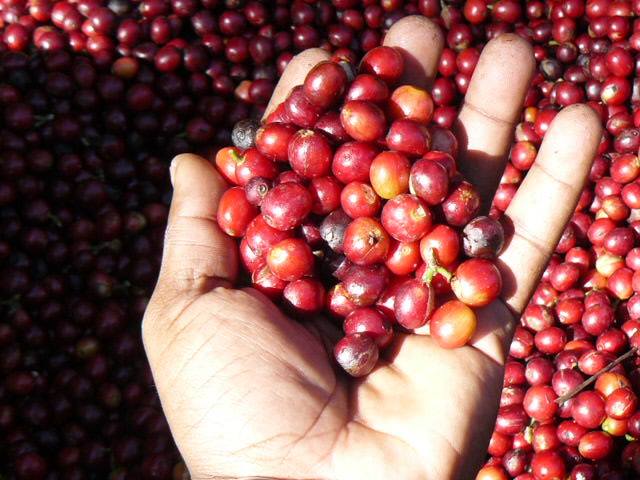![]() Living in the small, rural community of Orinoco on the isolated Caribbean coast of southern Nicaragua, Mateo is a Garifuna leader and healer who uses ancestral medicine made from medicinal plants to promote the health of his community. He knows how important his teas and poultices are because often community members can’t afford to get to the hospital in the city of Bluefields. The Garifuna—an Afro-Indigenous group in Central America—only number about 5,000 people in Nicaragua; they are treated like country bumpkins when they travel from Pearl Lagoon to Bluefields. Furthermore, when they make it all the way to Managua, the capital of Nicaragua on the Pacific Coast, they’re discriminated against for being Black and Indigenous.
Living in the small, rural community of Orinoco on the isolated Caribbean coast of southern Nicaragua, Mateo is a Garifuna leader and healer who uses ancestral medicine made from medicinal plants to promote the health of his community. He knows how important his teas and poultices are because often community members can’t afford to get to the hospital in the city of Bluefields. The Garifuna—an Afro-Indigenous group in Central America—only number about 5,000 people in Nicaragua; they are treated like country bumpkins when they travel from Pearl Lagoon to Bluefields. Furthermore, when they make it all the way to Managua, the capital of Nicaragua on the Pacific Coast, they’re discriminated against for being Black and Indigenous.
The Garifuna of Nicaragua belong to the pan-Garifuna community of Central America and beyond. The Garifuna are a Central American, Afro-Indigenous people born of the Caribbean and watched over by loyal ancestors. Worldwide, the pan-Garifuna community numbers about 300,000 – 400,000; they inhabit communities along the Caribbean coast of Central America, 100,000 of whom live in the United States and Canada. The Garifuna are a hybrid group who emerged as a people a couple of hundred years ago on the Caribbean island of St. Vincent from the intermarriage of shipwrecked West Africans destined to be sold as slaves, escaped slaves, and local Indigenous groups, the Arawak and Red Caribs. The Garifuna ended up in Honduras when exiled there by the British in 1796, and their diaspora continued from there to include Garifuna communities along the Caribbean coast of Central America, as well as Nicaragua, the focus of this piece. The diasporic movement of Garifunas seeking work and moving around the region is a constant trait.
In Surviving the Americas: Garifuna Persistence from Nicaragua to New York City, my co-author, Leonard Joseph Bent, describes his childhood growing up in Orinoco on the remote shores of Pearl Lagoon: “During my childhood, it was delightful for me to visit the communities. It was so good and enjoyable to see and be near nature. I can remember when leaving Bluefields in my father’s little dugout boat, or my uncle’s barge boat, to go to Pearl Lagoon and then to Orinoco, Brown Bank, La Fe, San Vicente, or Marshall Point, we would pass by areas rich in flora with leafy vegetation. We could see a lot of yolillos (yolk trees), mangroves, lilies, orchids, coco plum, pine trees, maypole trees, oak trees, and other timber trees. We would also pass by areas rich in fauna, observing pelicans, albatross, herons, crocodiles, alligators, howler monkeys, squirrels, varieties of birds, and some snakes (poisonous and nonpoisonous ones). We would ride across wide rivers and narrow rivers with crystal waters. In some areas, we would take our bucket and fetch water to drink, so fresh and clean. When getting in the lagoon in the Pearl Lagoon area, the water was crystal clear and turquoise. We could see to the bottom where white sand and green grass served as food for manatees and fish. In the lagoon, there were varieties of fish in abundance—snook, copper mouth, bass, catfish, jack, mackerel, tarpon, shark, swordfish, junefish, dolphins, turtle, and stingray.”
Today, however, many challenges face the Garifuna communities on the Caribbean coast of Nicaragua due to the depletion of the fishing industry to the detriment of artisanal, local fishing practices from the Garifuna communities on one hand, and illegal land grabs by mestizo settlers on the other. This, in turn, has contributed to increased poverty and exclusion for the Garifuna communities, which has led to renewed diasporic economic arrangements as communal lands get occupied by settlers and rural families are forced to send family members abroad to earn income. These economic and political developments, with their historical roots in tensions between the colonizing forces of the Spanish and the British on the Caribbean coast of Nicaragua, are aggravated by how the Nicaraguan government continues to promote internal colonization and the extractive practices of the past in the Caribbean communities rich in natural resources yet marginalized by discrimination due to location, ethnicity, and poverty.
In addition to the influx of settlers, some Garifuna consider selling their land because of poverty due to there not being as much fish. According to Mateo, some community members have sold land to the mestizos because they don’t want to farm the land anymore: “they think the Black man shouldn’t be a farmer, should be fishing.” The difficult part of this is that fishing has been so depleted in the Pearl Lagoon and out on the sea due to overfishing by the commercial fleets that many are unable to earn a living fishing. One of the school teachers in Orinoco told us: “We don’t work. The fish is bajo, bajo, bajo. A lot of people live hand to mouth.” So, they sell the land because they don’t want to be farmers but then have to fish to survive and there are fewer and fewer fish.
Mateo’s shepherding of the communal land he cultivates is for the future. His connection to the land is inspired by the past and the present; Mateo simultaneously seeks advice from and receives guidance from his ancestors on what plants and herbs to use through his dreams, and says the cultivation is “also for those who come afterwards,” meaning the next generation. In this case, Mateo’s grandson.
Despite threats from natural resource depletion and settler incursion, Orinoco and surrounding Garifuna communities persist because of their connection to the land and the sea. Other positive forces include the importance of family and kin, including ancestors, and Garifuna adaptability to change. Their spirit of persistence and resistance not only serves to help them survive but also serves as an inspiration for other small, beleaguered communities worldwide who endeavor to persist in the middle of adverse situations.
To learn more about the persistence of the Garifuna in Nicaragua, you can read Surviving the Americas: Garifuna Persistence from Nicaragua to New York City

One of the four co-authors of Surviving the Americas, Serena Cosgrove, PhD is an anthropologist and sociologist who teaches in the International Studies program at Seattle University. She serves as the director of Latin American Studies there and is the faculty coordinator for SU’s Central America Initiative. You can follow the SU Central America Initiative on Facebook at Seattle University Central America Initiative.

